Church of the Multiplication - Tabgha, Israel
There is a miracle in the Bible where Jesus fed 5,000 with just five loaves and two fishes. Often forgotten is the circumstances prior to this miracle. Jesus was back on the Sea of Galilee in a boat, taking some personal time to reflect on the beheading of his cousin, John the Baptist. The first twelve verses of Matthew 14 tell the story of the beheading. I will pick up from there to recount what happened next (NIV Version):
Jesus Feeds the Five Thousand
13 When Jesus heard what had happened, he withdrew by boat privately to a solitary place. Hearing of this, the crowds followed him on foot from the towns. 14 When Jesus landed and saw a large crowd, he had compassion on them and healed their sick.
15 As evening approached, the disciples came to him and said, “This is a remote place, and it’s already getting late. Send the crowds away, so they can go to the villages and buy themselves some food.”
16 Jesus replied, “They do not need to go away. You give them something to eat.”
17 “We have here only five loaves of bread and two fish,” they answered.
18 “Bring them here to me,” he said. 19 And he directed the people to sit down on the grass. Taking the five loaves and the two fish and looking up to heaven, he gave thanks and broke the loaves. Then he gave them to the disciples, and the disciples gave them to the people. 20 They all ate and were satisfied, and the disciples picked up twelve basketfuls of broken pieces that were left over. 21 The number of those who ate was about five thousand men, besides women and children.
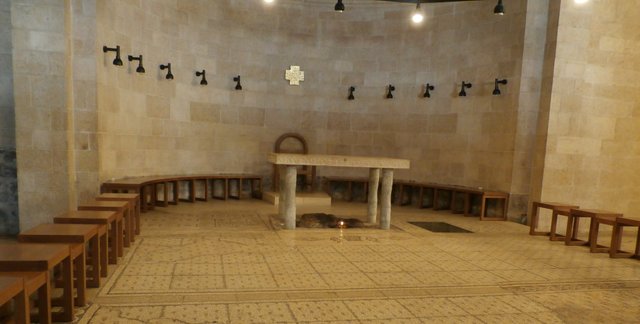
Tradition has held that Jesus placed the loaves and fishes on a rock near the Sea of Galilee to bless them. That spot is commemorated with the Church of the Multiplication. The sanctuary is pictured above. It is a typical "nave" design, with the altar at the front. In this case, the altar is constructed over the rock, which has a flame that can be seen burning in this photo.
Now, one might ask "how do we know this is the exact rock?" We don't. We know it was near here. What we do know is that this is the spot that has been revered for centuries as the place where the miracle happened. It is well documented. In fact, the earliest written account dates all the way back to 380 AD, when a Spanish pilgrim, Egeria, wrote about it in her journal (a letter comprised from her notes of the journey). Her description of the church matches the location of this church, which has remnants that date back to that era.
In her own words (translated) she wrote “Not far away from there (Capernaum) are some stone steps where the Lord stood. And in the same place by the sea is a grassy field with plenty of hay and many palm trees. By them are seven springs, each flowing strongly. And this is the field where the Lord fed the people with the five loaves and two fishes. In fact the stone on which the Lord placed the bread has now been made into an altar. People who go there take away small pieces of the stone to bring them prosperity, and they are very effective. Past the walls of this church goes the public highway on which the Apostle Matthew had his place of custom. Near there on a mountain is a cave to which the Saviour climbed and spoke the Beatitudes.”
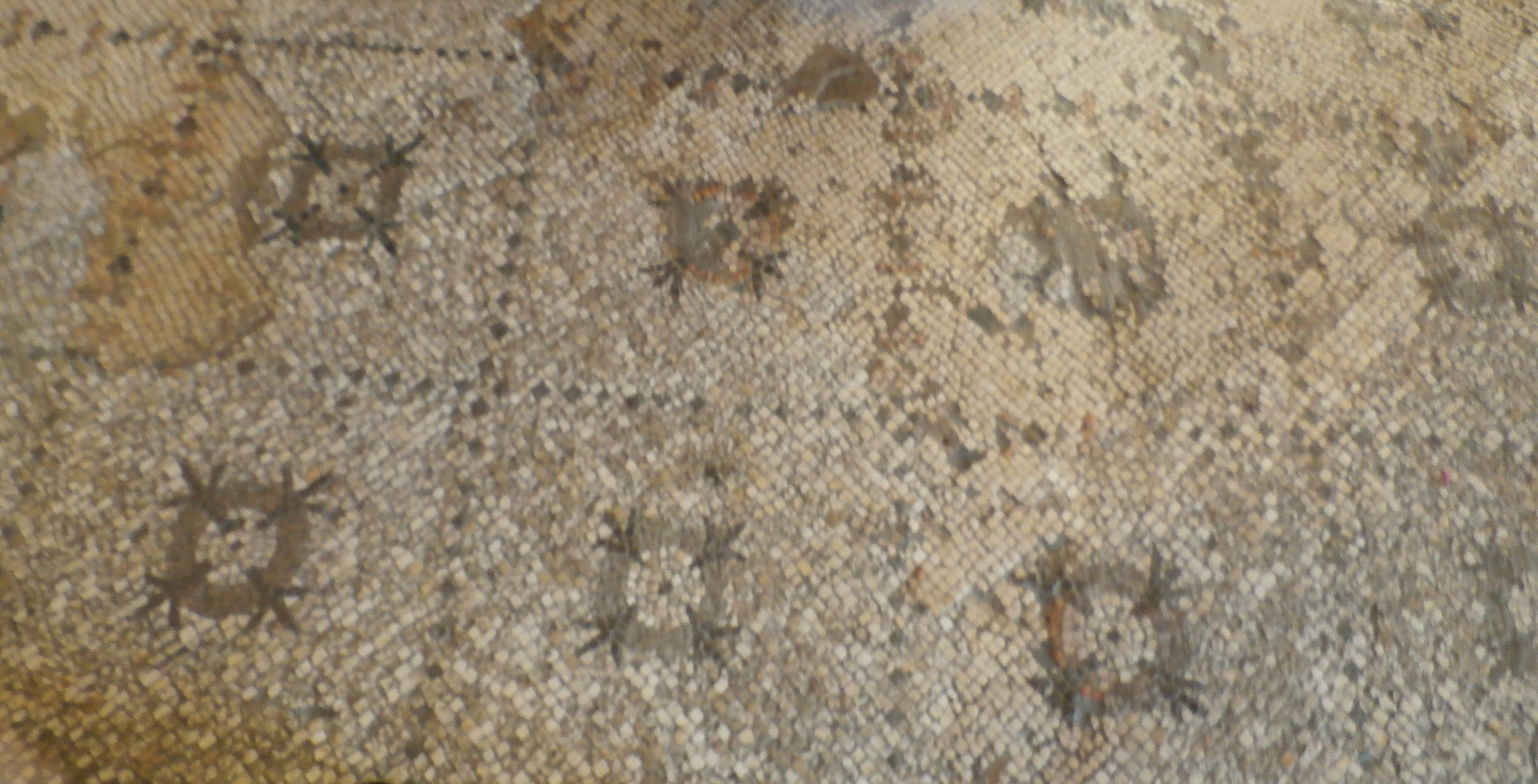
In this photo, we can see parts of the heavily worn mosaic floor. This floor is believed to have been laid around 480 AD, when the original Byzantine era church was enlarged. The church was destroyed in 614 by the Persians. It lay dormant for centuries. The church was discovered in the late 1800s and further excavated in the 1930s. Both the 5th century church and the smaller 4th century church were dated during those later excavations. The new church was built over the floor plan of the 5th century church. So how do we connect this ancient church to the Multiplication? First, the location matches the description given by Egeria. Second, the original mosaic floor next to the altar was intact. The mosaic depicts baskets of bread and fish. While it may be difficult to tie this location all the way back to the first century, it certainly has an indisputable tie to the fourth century.
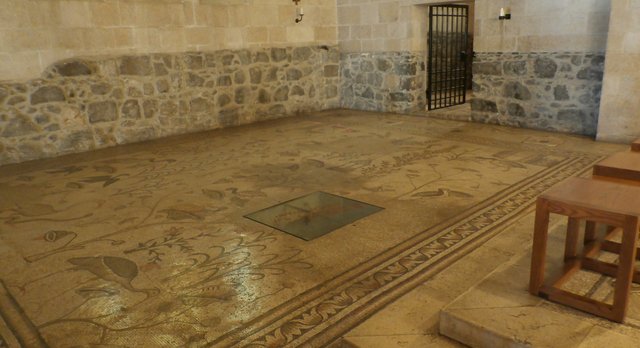
The transept, to the left of the altar area, has a large Byzantine era mosaic floor that is in exceptional condition. For tile laid sixteen hundred years ago, it is an amazing sight to see. When I took this photo, I was originally intending to document the foundations of the original church, where were still standing. The newer church was built upon those very foundations. It is amazing to me to see architecture that blends old with new so seamlessly. Particularly when you consider the age of the original foundations. The glass openings in the floor of this photo and the one to the left of the altar in the second photo allow visibility to the remains of the fourth century church.
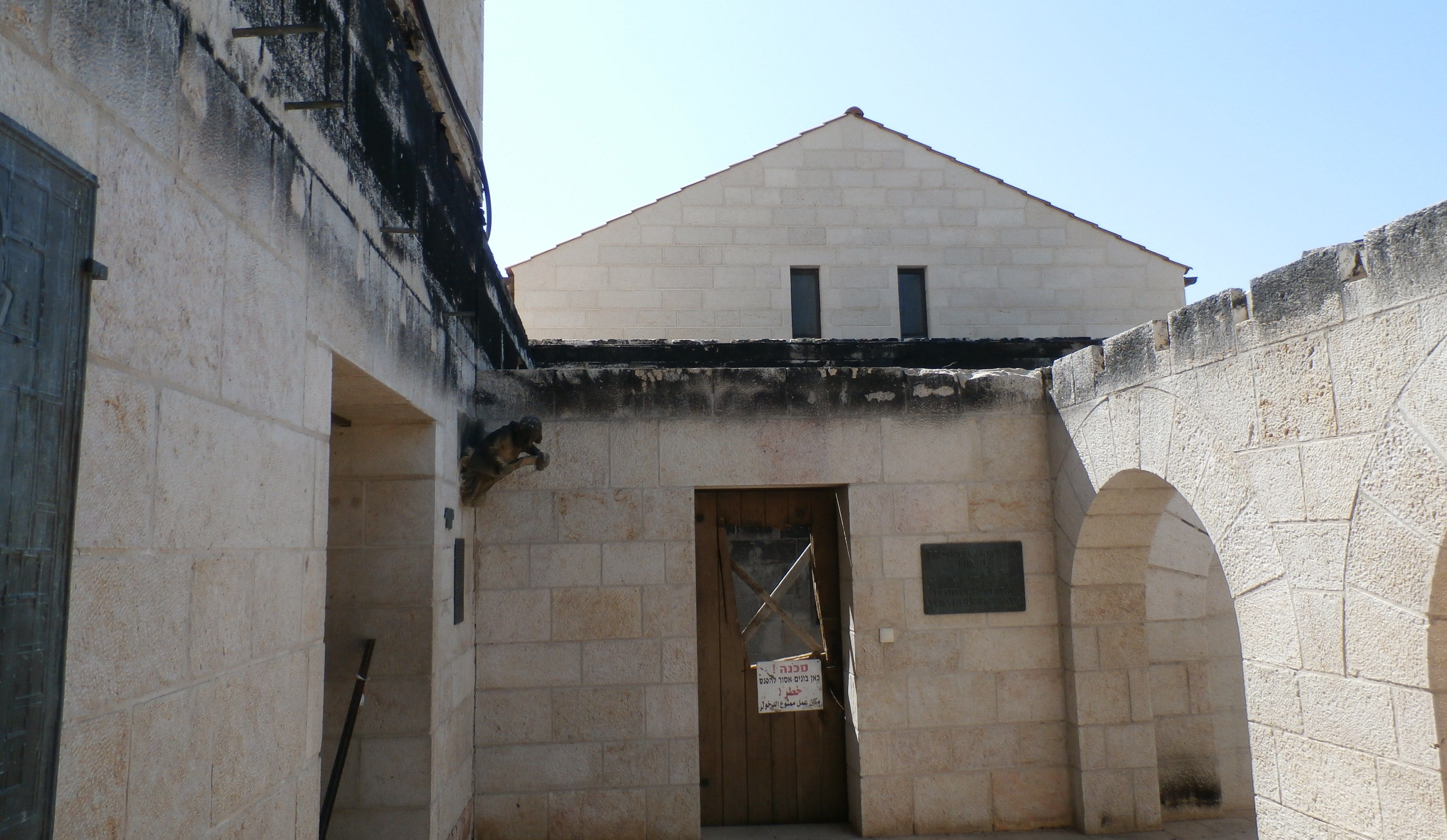
We visited Israel last year. Unfortunately, the year before (2015), arsonist attempted to destroy this ancient treasure. The adjacent building sustained heavy damage. Remnants of that damage were still visible a year later. I documented it because it is now part of the history of this holy site. Luckily, the church itself was unharmed.
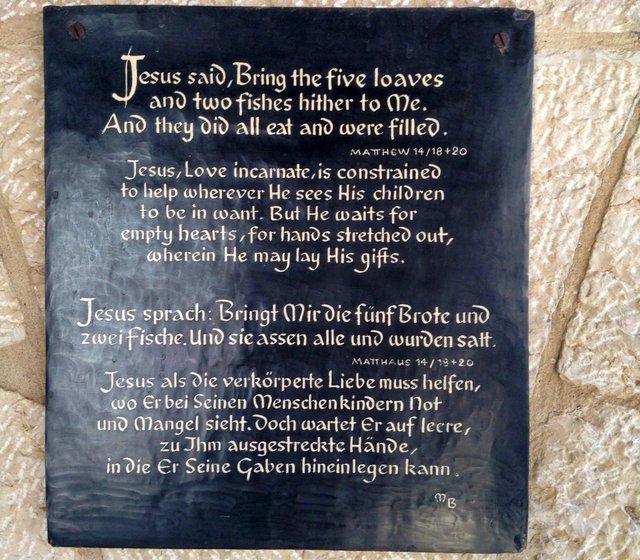
I also snapped a photo of this sign in the courtyard. It pretty much sums up the purpose of this church. While, as Christians, we don't worship stones, as a history buff I am amazed to see our Christian history so beautifully preserved. I was raised protestant, but have no ill feelings toward Catholics. They are two branches of the same tree. But I really came to appreciate the diligence of Catholic orders that have diligently protected the history of Christianity with amazing churches. They provide a place to reflect on the significance of the location. They do not serve as icons. They serve as memorials. And there is nothing wrong with memorializing our past. There is a feeling of awe I felt when I walked into these churches that had been definitively placed. Many are most certainly precise, if not close to precise. I wouldn't normally consider visiting a bunch of churches to be a "vacation." But in this case, it was my most memorable vacation to date.
A Christian Guide to Israel
Hotels
Cinema Hotel Tel Aviv, Israel
Ron Beach Hotel, Tiberias, Israel
Prima Park Hotel, Jerusalem, Israel
Attractions
Caesarea National Park Caesarea, Israel
Mount Precipice Mount Kedimum, Israel
Sea of Galilee Boat Ride Tiberias, Israel
Yigal Alon Museum (Jesus Boat) Ginosar, Israel
Capernaum, Israel
St. Peter’s Restaurant Kinneret, Israel
Caesarea Philippi Banias Springs, Israel
Israeli 6-Day War Memorial
Jordan River Baptismal Site, Yardenit, Israel
Beit She’an National Park, Beit She’an, Israel
Mount of Olives, Jerusalem, Israel
Garden Tomb, Jerusalem, Israel
Western Wall, Jerusalem, Israel
Western Wall Tunnels, Jerusalem, Israel
Via Dolorosa, Jerusalem, Israel
Bethlehem New Store Gift Shop
Pool of Bethesda, Jerusalem, Israel
Israel Museum, Jerusalem, Israel
Yad Vashem, Jerusalem, Israel
House of Caiaphas the High Priest, Jerusalem, Israel
The Upper Room, Jerusalem, Israel
Tomb of King David, Jerusalem, Israel
Masada National Park, Masada, Israel
The Dead Sea, Masada, Israel
Churches
Discalced Carmelite Monastery Muhraqa, Israel
Basilica of the Annunciation Nazareth, Israel
St. Peter’s Church Capernaum, Israel
Church of the Multiplication Tabgha, Israel
Church of the Beatitudes Tabgha, Israel
Church of All Nations, Jerusalem, Israel
Church of Saint Anne, Jerusalem, Israel
Church of the Holy Sepulcher, Jerusalem, Israel
Church of the Nativity, Bethlehem, Israel
These photos are my own. They may be used with permission.
@originalworks
The @OriginalWorks bot has determined this post by @coldsteem to be original material and upvoted(1.5%) it!
To call @OriginalWorks, simply reply to any post with @originalworks or !originalworks in your message!